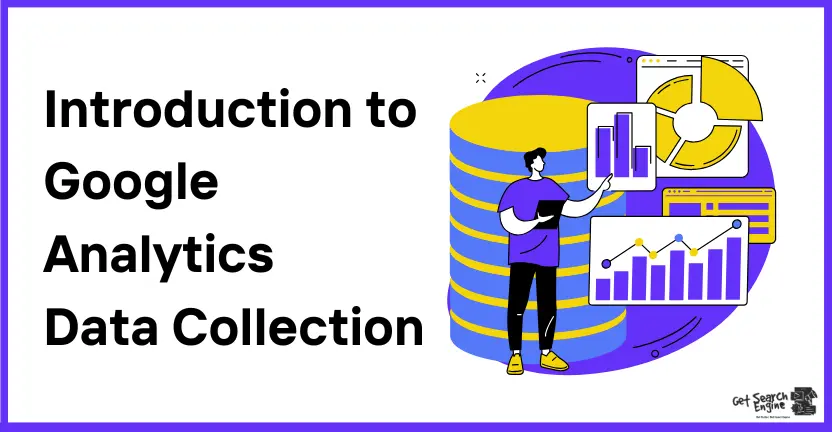Google Analytics is a powerful tool that allows businesses to track and analyse user behavior on websites and mobile applications. Businesses can make informed decisions by understanding how users interact with a site or app, improving their marketing strategies and customer experience.
The data collection process in Google Analytics is essential because it helps businesses track specific user actions and interactions. This data enables a deeper understanding of how visitors navigate a website, what content they engage with, and how well it achieves its goals.
Key Points:
- Google Analytics Data Collection provides insights into user behavior, allowing businesses to make data-driven decisions.
- How Google Analytics Works: It automatically tracks user interactions like page views, clicks, and transactions, while also offering customization options for tracking unique events.
- Importance of Understanding Data Collection: It allows businesses to tailor their marketing efforts, improve website design, and enhance the customer journey.
By grasping the data collection process, businesses can use Google Analytics to track and drive long-term success.
Connecting Your Website or App to Google Analytics
Connect your website or app to the platform to track data with Google Analytics. Here are the steps for both:
Website Setup: Add a Google Analytics tracking code to connect your website. This code, also known as the tracking tag, collects user data and sends it to Google Analytics for analysis. You can do this by inserting the code directly into your website’s HTML or using Google Tag Manager. Google Tag Manager simplifies the process by allowing you to manage all your tags in one place without modifying the website code each time.
App Setup: For apps, the process is slightly different. You must use the Firebase SDK (Software Development Kit) to connect an app to Google Analytics. Firebase is a Google tool designed specifically for mobile app development and integrates seamlessly with Google Analytics. The SDK allows you to collect user data from your app and send it to Google Analytics for tracking.
Why Setup Accuracy Matters: Ensuring the setup is correct is crucial for accurate data collection. Incorrect tagging or setup can lead to missing or incorrect data, affecting your ability to make informed business decisions.
Understanding How Google Analytics Collects User Data
Google Analytics tracks a wide range of user interactions to help businesses understand behavior on their website or app. The tool automatically collects user engagement data with your site, allowing you to make informed decisions based on real insights.
Types of Data Collected: Google Analytics gathers various types of data, such as:
- Page views: The number of times a page is viewed.
- Device types: Information on whether the user is browsing on a desktop, tablet, or mobile.
- Geographic locations: Where your users are located, based on their IP address.
- Interactions: Actions like clicks, form submissions, video views, and more.
Google Analytics Event Tracking: An “event” in Google Analytics refers to a user interaction on your website that is tracked separately from page views. These include clicking a button, submitting a form, or watching a video. Events are automatically logged by Google Analytics, meaning you don’t have to manually set them up unless you need to track custom events.
How Data Is Processed: Once the raw data is collected, Google Analytics processes it into structured reports. These reports help you analyse user behavior and track key metrics like conversion rates, bounce rates, and session duration, enabling you to make data-driven decisions.
Using Custom Events in Google Analytics
Custom events in Google Analytics allow businesses to track user actions unique to their goals. While Google Analytics automatically tracks basic events like page views and clicks, custom events are designed to capture more specific interactions that are important to a business.
What Are Custom Events? Custom events are user interactions that go beyond the standard data collection. The business defines them and allows for tracking particular actions that align with specific goals, such as conversions or engagement.
Examples of Custom Events:
- Newsletter sign-ups: Track when a user subscribes to your newsletter.
- Purchase completions: Record when a user completes a transaction on your site or app.
- Game level completions: In mobile apps, track when a player reaches a new game level.
Custom events help businesses measure key performance indicators (KPIs) and focus on critical actions. These can be set up using Google Tag Manager for websites or the Firebase SDK for mobile apps, ensuring accurate data collection for specific objectives.
Processing Data into Reports in Google Analytics
Once Google Analytics collects raw data from user interactions, it processes the information into detailed reports that provide valuable business insights. These reports help businesses understand user behavior, track sales, and measure other key metrics, making the data actionable.
How Data Is Processed: Google Analytics automatically organises and processes data into easy-to-read formats, such as reports and dashboards. This makes it simple for businesses to access and interpret the information, even without technical expertise.
Examples of Reports:
- Traffic Sources: Shows where your website visitors are coming from, such as search engines, social media, or direct traffic.
- User Demographics: Provides insights into the age, gender, and interests of your website visitors.
- Goal Conversions: Tracks specific actions like form submissions, sign-ups, or purchases, showing how well your website achieves its objectives.
By turning raw data into these insightful reports, Google Analytics enables businesses to evaluate the effectiveness of marketing campaigns and identify which areas of the site are performing well.
Analysing Google Analytics Data for Business Decisions
Analysing data from Google Analytics allows businesses to gain valuable insights into customer behavior, enabling them to make informed decisions and optimise their strategies. By understanding how users interact with a website or app, businesses can better target their marketing efforts and improve the customer experience.
Key Metrics to Track:
- Page Views: The number of times a page is viewed helps gauge content popularity.
- Bounce Rate: The percentage of visitors who leave the site after viewing one page, indicating the effectiveness of landing pages.
- Conversion Rate: Measures the percentage of visitors who complete a desired action, such as purchasing or filling out a form.
How Insights Help Business Decisions: Insights from Google Analytics can guide advertising, content strategy, and user experience design decisions. For example, businesses can adjust their messaging or optimise their landing pages to improve ROI if a marketing campaign drives high traffic but low conversions. Tracking these metrics helps businesses refine strategies and achieve better results.
Conclusion and Best Practices
In conclusion, Google Analytics is essential for businesses aiming to understand user behavior and improve customer engagement. By connecting your website or app, you gain valuable insights into user actions, enabling data-driven decision-making.
Key Takeaways:
- Custom events and automatic data collection help businesses capture essential interactions.
- Regularly reviewing reports and tracking key metrics ensures ongoing optimisation.
To make the most of Google Analytics, it’s crucial to follow best practices, such as setting up custom events for specific goals and consistently analysing the data. If you haven’t already, set up Google Analytics for your website or app to benefit from its powerful insights today.





Leave a Reply